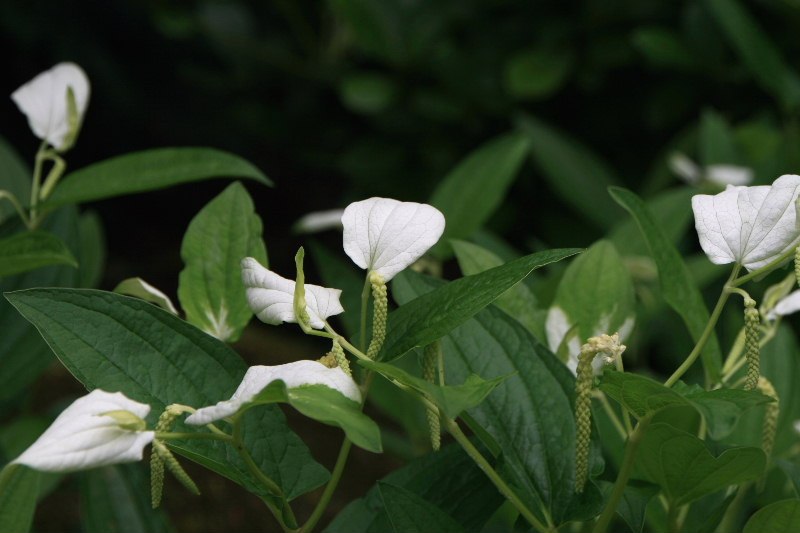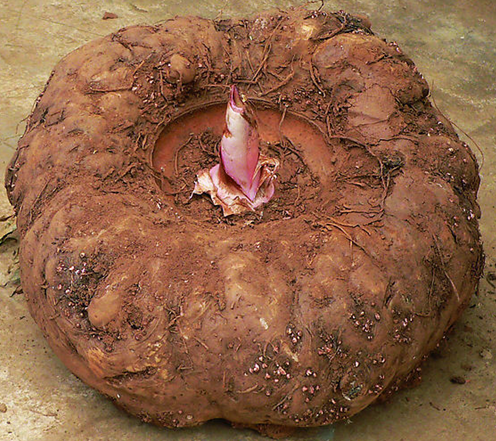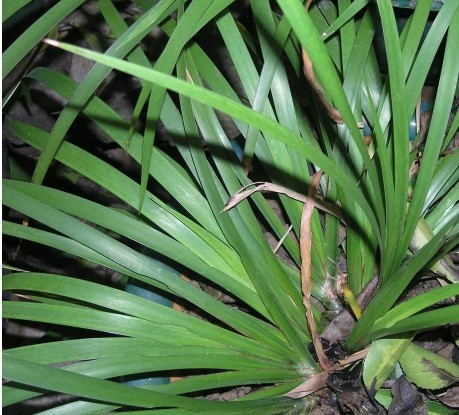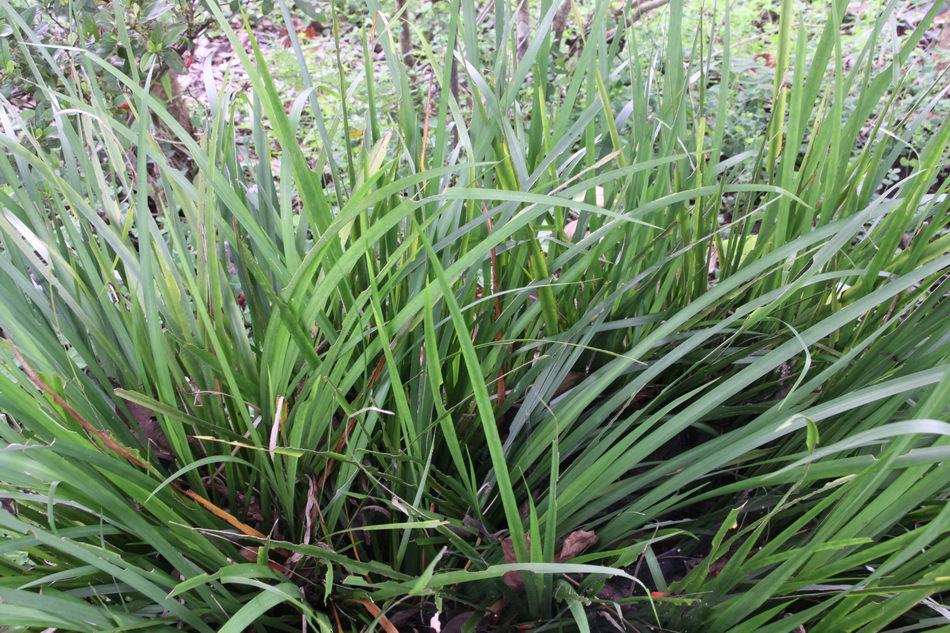- Liliaceae
- Lamiaceae
- Euphorbiaceae
- Leguminosae
- Zingiberaceae
- Chloranthaceae
- Campanulaceae
- Asteraceae
- Acanthaceae
- Orchidaceae
- Polygonaceae
- Ranunculaceae
- Vitaceae
- Rubiaceae
- Solanaceae
- Thymelaeaceae
- Saururaceae
- Moraceae
- Polypodiaceae
- Myrtaceae
- Araceae
- Adiantaceae
- Schisandraceae
- Amaranthaceae
- Berberidaceae
- Araliaceae
- Taxaceae
- Cucurbitaceae
- Apiaceae
- Guttiferae
- Scrophulariaceae
- Papilionaceae
- Caprifoliaceae
- Elaeagnaceae
- Apocynaceae
- Brassicaceae
- Papaveraceae
- Gentianaceae
- Paeoniaceae
- Lauraceae
- Punicaceae
- Nyssaceae
- Ephedraceae
- Gnetaceae
- Polygalaceae
- Violaceae
- Ginkgoaceae
- Cupressaceae
- Dipsacaceae
- Eucommiaceae
- Juglandaceae
- Dryopteridaceae
- Rosaceae
- Huperziaceae
- Caryophyllaceae
- Rhamnaceae

Pinellia ternate (Thunb.) Berit
- Introduction
- Download
Blast
Pinellia ternata (Thunb.) Berit. is an anti-emetic with analgesic and sedative effects, and has been applied as an antitussive and expectorant . The dried tuber of this herb, called “banxia” in Chinese, is in the top 10 most commonly used traditional Chinese medicines. The alkaloids isolated from the tubers of P. ternata are said to have anticancer properties. P. ternata is widely distributed in China and other Asian countries. Due to overexploitation and lack of large-scale plantings, P. ternata sources are becoming increasingly scarce.
1
Year: 2016
Institution: Yunnan Research Center on Good Agricultural Practice for Dominant Chinese Medicinal Materials, Yunnan Agricultural University, Kunming, China
Material: Yunnan, China
2
Year: 2016
Institution: Ministry of Education Key Laboratory of Standardization of Chinese Herbal Medicine, College of Pharmacy
Material: Sichuan, China
Download:
http://www.herbal-genome.cn/index.php?m=content&c=index&a=show&catid=100&id=147

Amorphophallus konjac
- Introduction
- Download
Blast
Amorphophallus konjac (konjac) has long been used in China, Japan and South East Asia as a food source and as a traditional medicine. Flour extracted from the corm of this species is used in Far Eastern cuisine to make noodles, tofu and snacks. In traditional Chinese medicine (TCM), a gel prepared from the flour has been used for detoxification, tumour-suppression, blood stasis alleviation and phlegm liquefaction; and for more than 2000 years has been consumed by the indigenous people of China for the treatment of asthma, cough, hernia, breast pain, burns as well as haematological and skin disorders.
Year:2013
Institution:State Key Laboratory of Hybrid Rice, College of Life Sciences, Wuhan University
Material: Wuhan, China
Data link: http://www.herbal-genome.cn/index.php?m=content&c=index&a=show&catid=100&id=72

Acorus gramineus Soland. var. pusillus (Sieb.) Engl. f. suaveolens C. Y. Cheng
- Introduction
- Download
Blast
Acorus gramineus Soland. var. pusillus (Sieb.) Engl. f. suaveolens C. Y. Cheng , the dry rhizomes it has been traditionally used in oriental prescriptions.
Year:2016
Institution:South China Botanical Garden, Chinese Academy of Sciences
Yunnan Agricultural University
Material: Wuhan, China
Data link: http://www.herbal-genome.cn/index.php?m=content&c=index&a=show&catid=100&id=71

Acorus gramineus Solander
- Introduction
- Download
Blast
Acorus gramineus Solander, the dry rhizomes of Acorus gramineus Solander, has been traditionally used in oriental prescriptions for hundreds of years. It is listed in Korean Pharmacopoeia as a sedative, digestive, analgesic, diuretic, and antifungal agent. Animal studies demonstrated various pharmacological actions of AGR in the central nervous system. For example, the ethanol and water extracts were shown to prolong pentobarbital-induced hypnotic action, lower body temperature, and attenuate pentylenetetrazole-induced seizures in rodents. The volatile oil or asarone was shown to be the active component in AGR exhibiting anticonvulsive action or sedative and hypothermic effects.
Year:2016
Institution:South China Botanical Garden, Chinese Academy of Sciences
Yunnan Agricultural University
Material: Wuhan, China
Data link: http://www.herbal-genome.cn/index.php?m=content&c=index&a=show&catid=100&id=70

Acorus tatarinowii
- Introduction
- Download
Blast
Rhizomes of Acorus tatarinowii Schott has been conventionally prescribed by traditional Chinese doctors as an antiepileptic drug, or in combination with other medical herbs for improvement of learning and memory.
Year:2016
Institution:South China Botanical Garden, Chinese Academy of Sciences
Yunnan Agricultural University
Material: Guangzhou, China
Data link: http://www.herbal-genome.cn/index.php?m=content&c=index&a=show&catid=100&id=69